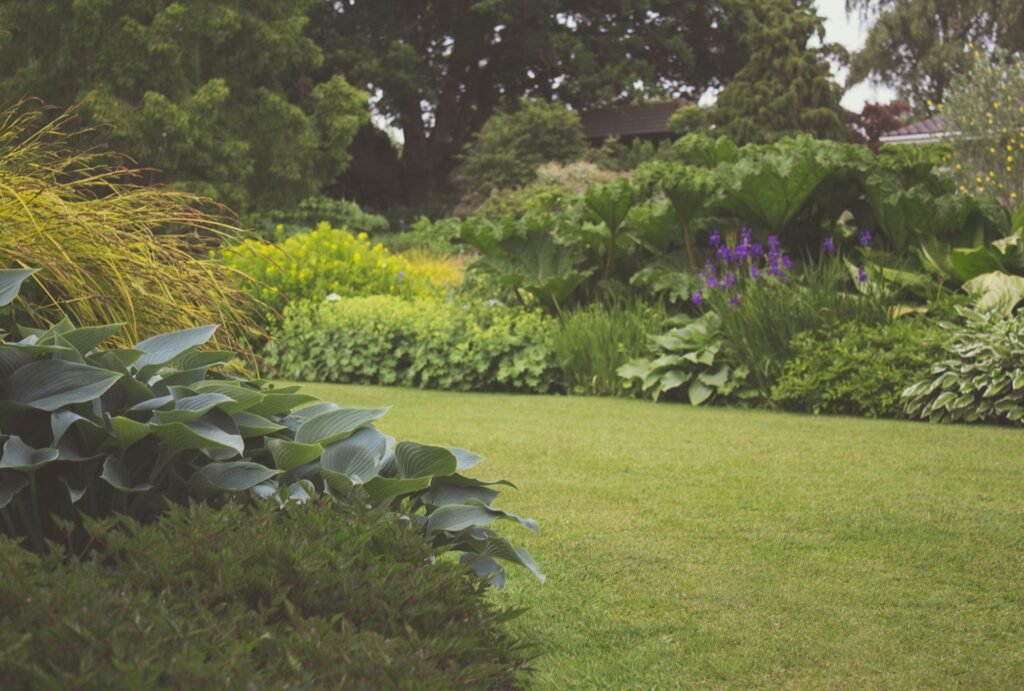Welcome to our boundary landscaping guide for New Zealand where we look at how to create beautiful and functional property boundaries that balance beauty and practicality. Boundary landscaping is more than just marking the property lines – it’s about privacy, curb appeal and the environment. In this article we will cover everything you need to know from choosing the right plants and materials to local regulations and common problems. Whether you’re a homeowner, gardener or just interested in NZ landscaping trends this guide will give you the inside information to design outdoor spaces that are gorgeous and green.
Boundary landscaping in NZ is about designing and maintaining the edges of a property using hedges, fences, trees or walls to create privacy, define the property lines and improve the look. It involves using native plants to support biodiversity and adhering to local regulations for height and placement. It’s where functionality meets environmental harmony and your outdoor space fits with NZ’s natural landscape.
Table of Contents
What is Boundary Landscaping?
Boundary landscaping is the design and build of features along the edges of your property to create definition, privacy and visual appeal. It involves using plants, structures and natural elements to define your property boundaries, it’s an important part of both residential and commercial outdoor spaces. Boundary landscaping is functional and also adds value to your property.
Why Boundary Landscaping
Boundary landscaping serves several purposes that benefits both the practical and aesthetic aspects of your property:
- Defining Property Lines: One of the main uses of boundary landscaping is to mark the edges of your property. By defining where your land starts and ends you can avoid disputes with your neighbors and keep your property separate. In urban areas where properties are close to each other these boundaries provide clarity and ownership.
- Creating Privacy: Many people use boundary landscaping to create a sense of seclusion. This is especially important for those living in high density areas or areas with a lot of foot traffic. Properly chosen plants, fences and walls can block the view from outsiders, giving you and your family more privacy and security.
- Adding Value: A good boundary landscaping design can add curb appeal to your property which in turn can increase its value. Buyers often look for a home that has privacy and well maintained outdoor spaces. Landscaping that defines property lines can also highlight the overall design of the garden and match the style of the house.
Boundary Landscaping Features
Here are some common boundary landscaping elements:
- Hedges: Hedges are a classic boundary landscaping option. These dense, bushy plants create a natural barrier and provide privacy without feeling too imposing. They can be trimmed to shape or left to grow wild depending on the look you want. Common hedge plants in New Zealand are native species like Pittosporum or Griselinia which thrive in our climate and provide a green screen all year round.
- Fences: Fences are one of the most common and practical boundary landscaping elements. They provide clear definition of property and are highly customizable with options from traditional timber fences to modern metal or composite. Fences can be designed for privacy, security or purely for aesthetics. When choosing a fence consider the materials that will match your property and withstand the elements.
- Trees and Shrubs: Planting trees and shrubs along the boundary lines can add to the natural beauty of your garden and be a screen. Tall trees like Pohutukawa or Cabbage Tree can provide height for privacy, shrubs like Camellias or Rhododendrons can add color and texture. Trees and shrubs can also reduce wind and noise, perfect for properties near busy roads or noisy areas.
- Rock Walls: For a more permanent and solid boundary solution many property owners choose to include rock walls. These can be built from local stone or natural materials to create a beautiful rustic barrier. Rock walls provide a solid structure that defines the landscape and adds elegance and strength. They are also low maintenance compared to living plants and can add a unique earthy element to your boundary design.
Boundary landscaping is an important part of having a functional, private and beautiful outdoor space. Whatever you choose – a natural hedge, a solid fence, leafy trees or durable rock walls – the elements you select will make up your property. It’s a way to define your land, add privacy and increase value – all while beautifying your outdoor space.

Boundary Landscaping NZ
Boundary landscaping in NZ is important for both function and form of residential and commercial properties. It’s the thoughtful design and placement of plants, trees, fences and other natural features that define the edge of a property. Beyond just marking boundaries it provides many benefits that can enhance the environment, your privacy and the cultural significance of the area.
Looks: New Zealand’s natural beauty
New Zealand has some of the most beautiful natural landscapes in the world, from rugged coastlines to lush forests. Boundary landscaping can complement and enhance these natural surroundings by blending in with the environment. Thoughtfully chosen plants, trees and landscaping features can create a visual flow that makes your property feel like an extension of the bigger landscape.
For example native plants like pōhutukawa, flax or kowhai can add colours and textures to your outdoor space and make it feel connected to the New Zealand landscape. By designing a boundary that reflects the beauty of the area you live in, homeowners not only improve the look of their property but also leave a lasting impression on anyone who visits.
Privacy and Security: A safe outdoor space
Privacy is highly valued in New Zealand especially when it comes to outdoor spaces. Whether you live in a rural or urban area boundary landscaping can provide a safe and secluded retreat from the outside world.
The placement of plants and fences can block unwanted views and create a more intimate space for relaxation and recreation. Tall dense hedges or trees like tī kōuka (cabbage tree) or kahikatea can form a natural barrier to keep prying eyes out and enhance the sense of security in your backyard. Also boundary landscaping can also deter intruders by reducing visibility into your property and create a safer space for families.
Environmental benefits: Supporting local biodiversity
One of the biggest benefits of boundary landscaping is the environmental impact. In New Zealand native plants play a crucial role in maintaining the health and biodiversity of local ecosystems. By incorporating native species into your boundary design you support pollinators like bees and birds and can even reduce soil erosion.
Native trees and plants are better suited to New Zealand’s climate and soil conditions and are more resilient and resource efficient than non native alternatives. By using native plants like rātā or harakeke (New Zealand flax) you not only create a beautiful boundary but also help conserve local wildlife and plant species and create a more sustainable environment.
Cultural and social context: Connecting to Māori culture
New Zealand’s cultural heritage plays a big role in boundary landscaping especially through the inclusion of Māori culture and values. Māori culture places a strong emphasis on the relationship between people and the land, landscaping is used to express identity and respect for the natural world.
Including Māori culture in your boundary landscaping can be a way to acknowledge and respect the indigenous heritage of New Zealand. This could be through the use of plants with cultural significance like harakeke for its historical use in weaving or incorporating Māori symbols and designs in fencing or gate structures. When done with respect these elements can enhance the look of your outdoor space and create a deeper connection to the land and its history.
Harmony with neighbouring properties
Boundary landscaping isn’t just about defining the edges of your own property it’s also about creating harmony and respect for neighbouring properties. A well designed boundary can create good relationships with your neighbours by creating a nice and non invasive divide between properties.
Choose plants wisely like low maintenance hedges or flowering shrubs to create a clear but beautiful separation. In urban areas where properties are closer together this is especially important. A thoughtful landscaping design that balances privacy with openness can prevent disputes and create a sense of community.
Boundary landscaping in New Zealand is more than just marking property lines. By considering aesthetic appeal, privacy, environmental sustainability, cultural values and harmony with neighbours you can create beautiful functional outdoor spaces that benefit you and the environment. Whether you want to enhance your natural environment, protect your privacy or make a positive impact on local biodiversity boundary landscaping has many benefits.
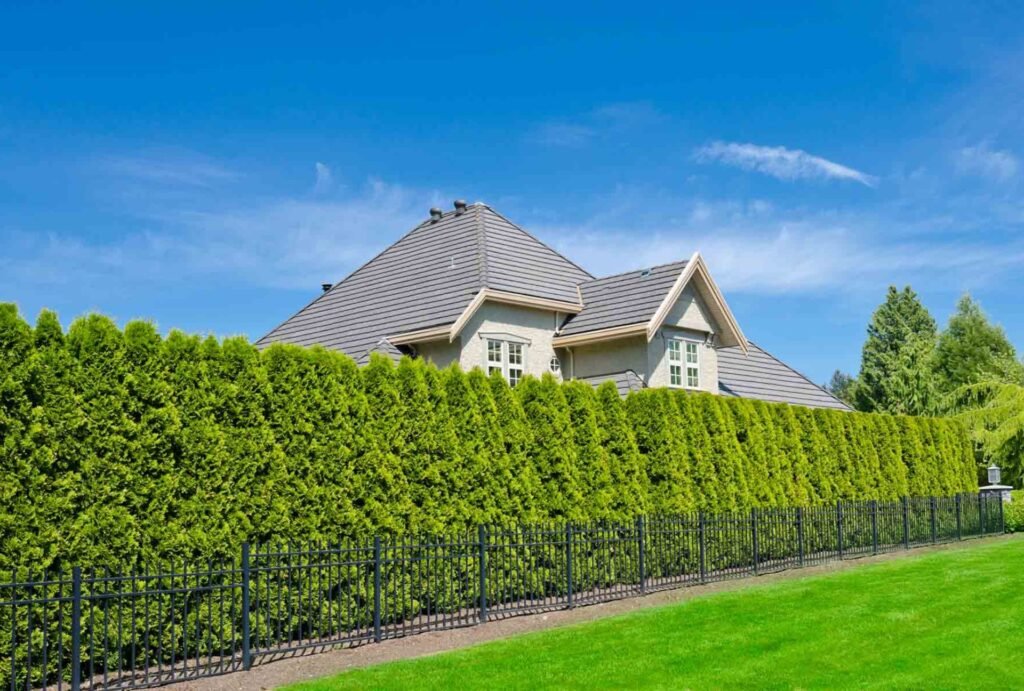
Boundary Landscaping NZ Regulations
When it comes to boundary landscaping in NZ, knowing and following the rules is key to avoiding conflicts and making sure your project is safe and legal. This covers the key rules for height restrictions for fences and hedges, planting near boundaries, neighbour and council consent and regional variations. We also have some tips for getting along with your neighbours during landscaping.
Height Restrictions for Fences and Hedges
In NZ, height restrictions for fences and hedges are set by local councils and vary depending on your property’s location and zone. For example, residential properties have specific height limits for front fences, usually 1.2 to 1.8m. For side or rear fences, the height can be higher but again, it depends on your local council’s rules.
Hedges are also governed by similar rules, with guidelines stating how tall a hedge can get before you need a resource consent. Many councils have rules on hedge height to prevent neighbour disputes, to ensure landscaping doesn’t block sunlight, air or privacy. If you’re planning to plant tall hedges along your boundary, check your local council’s guidelines as some areas have stricter rules for tree and hedge heights.
Planting Near Boundaries
Planting near boundaries is another area to be mindful of. In NZ there are rules about how close you can plant trees, shrubs or other vegetation to your boundary. These rules are to prevent issues like overhanging branches or root systems invading neighbouring properties which can cause disputes.
For example, you can plant near the boundary but not certain species that will grow too big and cause problems for nearby structures or properties. Make sure any trees or plants you choose are suitable for the space and won’t cause long term issues for your neighbour. If you’re planting trees that will grow tall you may need to comply with specific setback requirements so the tree doesn’t extend beyond your property.
Neighbour or Council Consent
Before you start any boundary landscaping, especially if you’re planning a fence or large hedge, you may need to get consent from your neighbours or in some cases the local council. Some councils require consent for specific works like building a high fence, planting a tall hedge or building near the boundary.
In many cases, especially if you’re modifying a boundary feature (like installing a fence taller than standard limits) it’s a good idea to talk to your neighbours first. Not only will this help with good relationships but can also avoid disputes later. In some areas there are strict legal requirements to consult with your neighbours especially if the changes you’re planning to make will affect their property, like blocking views, access or light.
And some landscaping projects will require a formal application to your local council if they involve big changes to the landscape or structures that will impact the environment or your property.
Regional Variations and Where to Find More Info
Remember regulations for boundary landscaping vary across NZ, each local council has its own rules and guidelines. While the principles of boundary fencing, planting restrictions and consent requirements are the same, the details, like height limits or what plants are allowed, are different.
For more information and to get the latest details go to your local council’s website or contact them directly. Many councils have a dedicated section on their website that outlines the rules and resources, including consent forms and application guidelines so your landscaping project is fully compliant with your area.
How to Avoid Disputes with Neighbours
Maintaining good relationships with your neighbours is one of the most important things about boundary landscaping. Disputes can arise if your landscaping project intrudes into your neighbour’s space or causes inconvenience. Here’s how to avoid:
- Talk to your neighbour: Before you start any big landscaping work take time to chat with your neighbour. Explain what you plan to do, listen to their concerns and be open to compromise. This will avoid misunderstandings and allow both parties to come to an agreement.
- Written Agreement: If you and your neighbour are happy with your plans consider putting it in writing. This will clarify expectations and protect both parties if any issues arise later.
- Check for Easements: Some properties have easements (legal rights for someone to use part of your land for specific purposes, like access or utilities). Before you make any changes to your boundary make sure there are no easements in place that will impact your landscaping.
By being proactive and talking to your neighbour you can get your boundary landscaping project done without any dramas.
Boundary landscaping in NZ is regulated and varies by region. Make sure you know the height limits for fences and hedges, planting near property lines and what’s required for consent from neighbour or council. Always go to your local council for specific info and make sure you follow good practice for talking to your neighbour to avoid disputes. By following these guidelines you can have a beautiful functional landscape and good relationships with your neighbour.
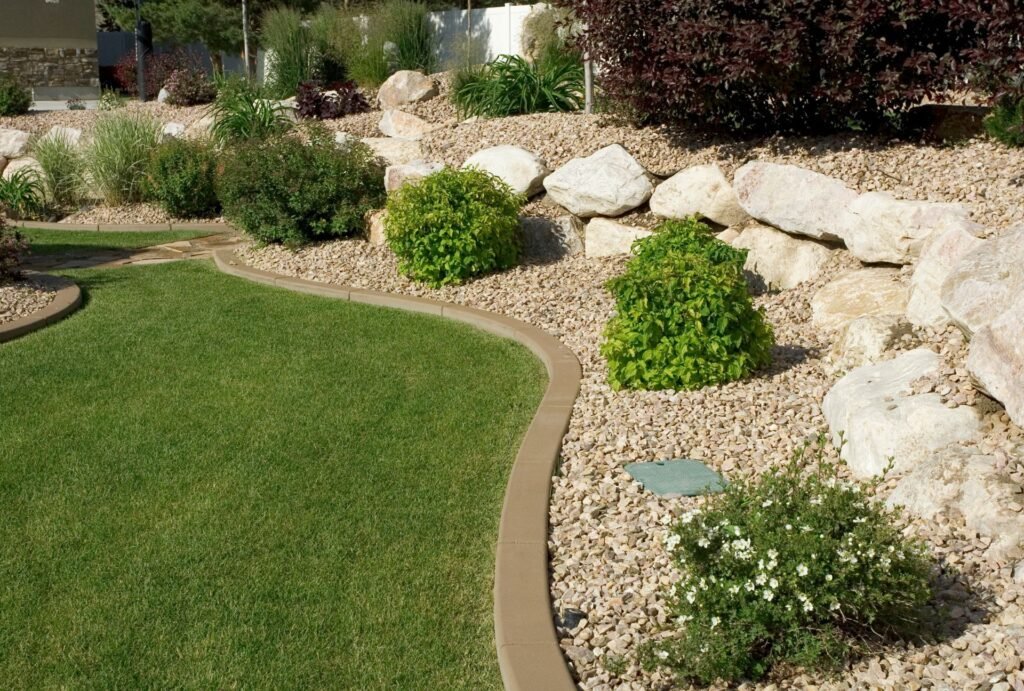
Boundary Landscaping In New Zealand
When it comes to boundary landscaping in New Zealand choosing the right plants is key to a beautiful, functional and sustainable outdoor space. The plants you choose will affect privacy, security and the overall environment of your property. In this section we’ll look at different types of plants for New Zealand’s climate and landscape, from native to fast growing hedges and low maintenance options.
Native Plants: The Green Choice for Boundary Landscaping
Native plants are the green choice for boundary landscaping in New Zealand. They are naturally adapted to the local climate so are well suited to New Zealand’s varied conditions. They are low maintenance and support local ecosystems so are eco friendly and add to biodiversity.
Native Plant Benefits:
- Low Maintenance: Native species need little attention once established. They are used to New Zealand’s rainfall, temperature and soil so don’t need to be watered or fertilised excessively. Perfect for homeowners who want a beautiful garden with minimal upkeep.
- Eco Friendly: By choosing native plants you are supporting local wildlife, bees, birds and insects. Native plants provide habitats and food sources for these creatures so a healthy thriving ecosystem.
- Climate Adaptation: Native plants are suited to New Zealand’s different climates. From the temperate zones of the South Island to the subtropical regions of the North Island native species can cope with local conditions so no extra care or artificial intervention is needed.
Native Plants for Boundary Landscaping:
- Kōwhai (Sophora spp.): With its bright yellow flowers the Kōwhai is a small tree that grows in most soil types. Attracts native birds like the tui and kereru so great for gardeners who want beauty and environmental benefits.
- Pōhutukawa (Metrosideros excelsa): Often called New Zealand’s Christmas tree the Pōhutukawa is a beautiful coastal plant with bright red flowers. Hardy, drought tolerant and dense bushy so great for natural boundaries or as a hedge.
- Harakeke (New Zealand Flax): This plant has long sword like leaves and beautiful flowers. Harakeke is great for boundaries as it grows dense and can be used for weaving which adds a cultural touch to your landscape.
Fast Hedges: Quick Privacy Solutions
If you need privacy fast fast hedges are a great option for boundary landscaping. They give you the privacy you need and add to the overall look of your property. Fast hedges are perfect for urban or suburban areas where a barrier is often needed for security or seclusion.
Fast Hedges:
- Pittosporum (Pittosporum tenuifolium): Pittosporum is a popular hedging plant due to its fast growth and dense foliage. Has glossy dark green leaves and small fragrant flowers. Pittosporum is adaptable to most soil types and can be pruned to a neat tidy hedge so great for quick boundaries.
- Griselinia (Griselinia littoralis): Griselinia is another fast growing evergreen shrub suitable for New Zealand’s coastal areas. Has thick leathery leaves and forms a dense hedge for good privacy. Griselinia is also wind resistant so great for coastal gardens or exposed properties.
Low Maintenance: Plants that can cope with NZ conditions with minimal care
If you want a low maintenance garden, you need to choose plants that can cope with NZ’s conditions with minimal care. These plants are hardy, drought tolerant and require little attention once established. Whether you’re after ground cover, small shrubs or trees for your boundary landscaping these low maintenance options will help you create a beautiful sustainable garden with minimal effort.
Examples of Low Maintenance:
- Lavender (Lavandula spp.): Lavender is a hardy, drought tolerant shrub that loves NZ’s sunshine. It requires minimal watering once established and has lovely purple flowers that attract bees and butterflies. Lavender is great for low maintenance, fragrant hedges or borders.
- Cabbage Tree (Cordyline australis): This stunning tree is native to NZ and is very hardy. It can cope with a variety of soils and weather conditions making it perfect for boundary landscaping in urban and rural areas. The Cabbage Tree’s tall, spiky leaves and white flowers are a feature in any garden.
Plant Spacing, Pruning and Seasonal Care
When planning your boundary landscaping, plant spacing, regular pruning and seasonal care are key to keeping your plants healthy and looking good.
- Plant Spacing: Make sure plants are spaced far enough apart to grow. For hedges space plants closer together (30-50cm apart) for a dense barrier. For trees and larger shrubs allow more space for them to mature.
- Pruning: Regular pruning keeps things tidy and encourages healthy growth. For fast growing hedges like Pittosporum regular trimming is essential to keep the plants in shape and prevent them from getting leggy. Native species like Kōwhai and Pōhutukawa may not need to be pruned as often but should be monitored for dead or damaged branches.
- Seasonal Care: While many native plants are hardy it’s still important to keep an eye on them during seasonal changes. In the cooler months make sure plants are mulched well to protect their roots from frost. In the warmer months make sure plants are watered well especially in dry areas.
By choosing the right plants and following these tips for plant spacing, pruning and seasonal care you can create a beautiful functional boundary landscape that requires minimal maintenance and adds to your property.
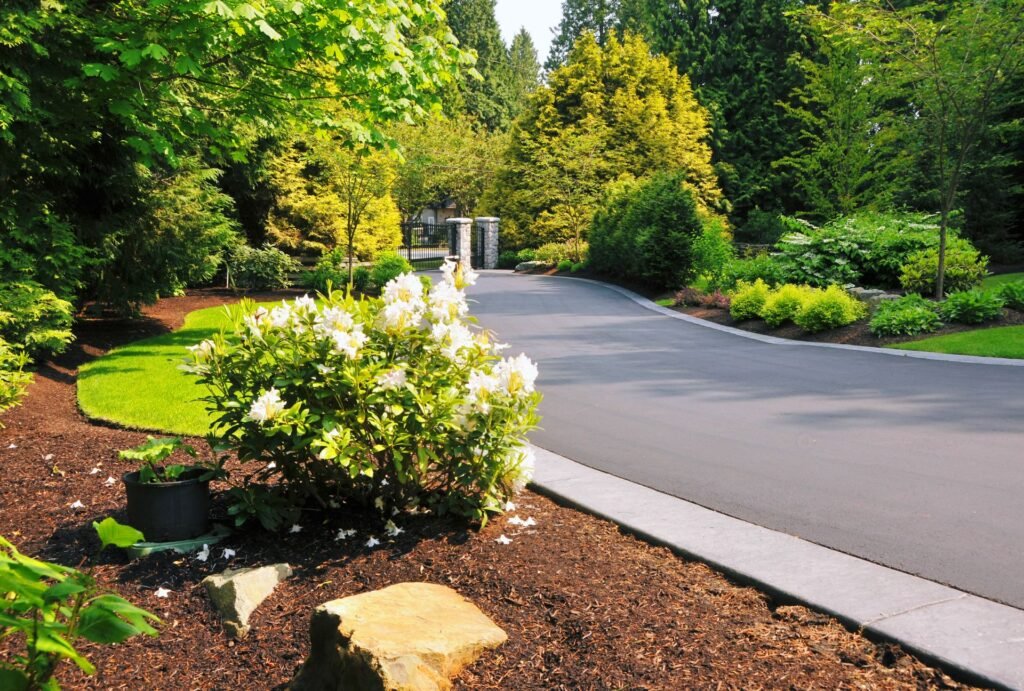
Boundary Landscaping Tips
When it comes to boundary landscaping the balance is key. Whether you have an urban section in the middle of New Zealand’s cities or a rural property with endless space, how you design your boundaries can impact your privacy and visual appeal. Let’s get into the nitty gritty of boundary landscaping that will add to your property’s charm and serve a purpose.
Functionality and Style
Privacy vs Open Views
One of the key considerations for boundary landscaping is the balance of privacy and open views. In urban areas where properties are close together, privacy is key. Using elements like tall fences, hedges or plants that create a natural barrier like native flax or large shrubs can block the view from your neighbours.
On the other hand if you have a property with views – fields, mountains or coastlines – preserving the view might be more important. In these cases lighter boundary treatments like low hedges, wrought iron fences or even living walls can define the space without blocking the view.
Urban and Rural Considerations
In urban areas where space is at a premium you need to think about how your boundary landscaping can function. For example a combination of hedges, decorative walls and maybe a row of trees can create a sense of separation from the street or neighbours. If security is a concern you may also want to include elements like tall fences or trellises that are both beautiful and a deterrent to unwanted visitors.
For rural properties the boundaries serve both functional and aesthetic purposes. Fences or natural barriers like native plantings provide privacy or wind protection and add to the overall landscape. Use materials that suit the rural environment like timber, stone or a combination of both that blend in with the surroundings.
Features
Decorative Walls, Trellises or Gates
A boundary should do more than just separate your space; it should add to the property’s charm. Decorative elements like walls, trellises and gates can turn a plain boundary into a feature. A stone or brick wall can provide a timeless solid structure that adds character while trellises covered in climbing plants like roses or jasmine can add a softer more organic feel to the boundary.
Gates are the first impression visitors get of your property. Choose gates that match your overall landscaping style whether it’s elegant wrought iron, rustic wood or modern metal. Gates are practical entry points but also an opportunity to add charm and personality to your boundary.
Sustainable Materials: Reclaimed Wood and Stones
Sustainability is becoming more and more important in landscaping and using eco-friendly materials can reduce the environmental impact of your boundary design. Reclaimed wood is a great choice for building fences, gates or even raised garden beds, it provides a rustic and natural look while reusing materials that would otherwise go to waste.
Stones and natural rocks are another sustainable option that can create beautiful boundary walls or pathways. These materials are durable, low maintenance and timeless and can add character to any property. If you want a more natural or rustic look consider using stones that are locally sourced to tie in with the surroundings.
Themed Landscapes
Coastal
For properties near the coast or those that want to evoke a coastal feel a coastal themed boundary design is a great option. Coastal landscapes often use materials that can withstand harsh weather conditions like driftwood fencing which gives the area a relaxed beachy feel. Hardy grasses like New Zealand’s native spinifex or lupins can be planted along the boundary to complement the coastal look and add texture and natural beauty.
Add sea inspired colours like soft blues, whites and sandy tones to reinforce the coastal feel. This theme works for rural coastal properties or urban homes that want to bring the calming effects of the sea into their space.
Modern Minimalist
If your style is modern and minimalist your boundary landscaping should reflect clean lines, simple structures and a stripped back approach. Choose modern materials like concrete, steel or aluminum for a clean contemporary look. A minimalist fence design – maybe with vertical or horizontal slats – can provide privacy without overwhelming the landscape.
Modern minimalist boundaries also work with manicured hedges or ornamental grasses that add a bit of greenery without being too fussy. The key is to keep it simple and clean. This design is for those who like a modern understated look.
Designing a boundary landscape requires thought and an eye for both function and style. By balancing privacy needs with visual appeal, using sustainable materials and unique themed designs you can create a boundary that not only defines your space but adds to the overall ambiance of your property. Whether you go coastal or modern minimalist your boundary landscaping can be a beautiful and practical feature that adds long term value to your home.

Common Problems And Solutions
Boundary landscaping in New Zealand is full of challenges due to our varied climate and different regulations. Whether you’re creating a garden to provide privacy, define property lines or enhance your home’s appearance, understanding these challenges and how to fix them is key. Below we look at the most common problems and solutions.
Neighbor Disputes: How to Resolve Disagreements
When landscaping near boundaries, neighbor disputes are common especially when trees, fences or hedges encroach on adjacent land. These can be tense so approach them with a solution focused mindset. If you’re facing a boundary dispute with your neighbor, the New Zealand Government provides guidance on resolving property disputes.
Solution:
- Clear Communication: Before you start any big landscaping project, talk to your neighbors about your plans. Explain the design, how it will affect their property and ask for their input. Open and honest communication avoids misunderstandings and builds goodwill.
- Respect Boundaries and Regulations: In New Zealand there are specific laws around fencing and tree heights especially in urban areas. Familiarize yourself with your local council regulations before you make any boundary changes. For example, fences over 2m high may require consent. Sticking to the rules means you stay within the law.
- Mediation: If a dispute arises despite your best efforts, consider involving a neutral third party mediator to help resolve the issue without escalating the conflict.
By addressing potential disputes early and openly you can avoid stress and build a good relationship with your neighbors.
Environmental Factors: Wind, Salt Air (Coastal), Drought
New Zealand’s climate is varied depending on where you are. Coastal properties have strong winds and salt air, while drought prone areas have water conservation issues. Understanding these environmental factors is key to choosing the right plants and materials.
Solution:
- Wind Protection: In coastal areas where the winds are fierce, you need to choose hardy plants that can withstand strong gusts. A dense hedge or windbreak fence will protect your garden from the elements and reduce wind erosion.
- Salt Tolerant Plants: For coastal properties, choose plants that are tolerant of salt air and soil. New Zealand native plants like flax (Phormium tenax), coastal pohutukawa (Metrosideros excelsa) and karaka (Corynocarpus laevigatus) are salt tolerant.
- Drought Resistant Plants: In drought prone areas water conservation is top of mind. Choose drought resistant native plants like New Zealand’s toetoe (Austroderia toetoe) or the NZ cabbage tree (Cordyline australis) which can survive with minimal water. Mulching around your plants also helps retain moisture in the soil.
- Rainwater Harvesting: Installing a rainwater collection system will provide a water source during dry times. This will conserve water and keep your landscaping healthy.
By choosing the right plants and taking action you can create a boundary landscape that works in any environment.
Maintenance Issues: How to Minimise
A boundary garden can be high maintenance especially if you have a big property or a complicated design. But there are ways to reduce maintenance and keep your landscaping looking good all year round.
Solution:
- Low Maintenance Plants: Choose plants that need minimal care and are suitable for New Zealand’s climate. Native plants are lower maintenance because they are adapted to our conditions and often require less water, pruning or pest control.
- Mulch: Mulching around your plants will retain moisture, suppress weeds and regulate soil temperature. Less weeding and less watering.
- Smart Irrigation: An automatic irrigation system with a timer will water your plants efficiently so they get the right amount of moisture without overwatering and reduce your workload.
- Prune Regularly: Pruning regularly will keep your plants in shape and healthy. Remove dead or diseased growth to reduce future plant health issues.
By simplifying your landscaping choices and planning for low maintenance you can have a garden without the constant workload.
Pests and Diseases: Identifying and Managing Common Plant Health Issues in NZ
Like all gardens boundary landscapes in New Zealand can be affected by pests and diseases. From aphids and whiteflies to fungal infections and plant rot these can damage your plants and disrupt the overall look.
Solution:
- Prevention is Key: Start by choosing pest resistant and disease tolerant plants for your area. Regularly inspect your plants for early signs of pests or disease. Catching problems early will save you time and effort in the long run.
- Natural Pest Control: Instead of using chemical pesticides use natural methods to control pests. Introduce beneficial insects like ladybugs which feed on aphids or use neem oil to deter pests without harming beneficial species.
- Proper Plant Care: Healthy plants are less prone to pests and diseases. Make sure your plants have the right soil, sun and water conditions to thrive. Don’t overcrowd your plants as this can create conditions that are favourable to pests.
- Fungal Treatments: For fungal diseases like powdery mildew or rust remove affected leaves and ensure good air circulation around plants. Infected plants may also benefit from natural antifungal treatments like a diluted solution of baking soda and water.
With regular care and natural pest management you can reduce the impact of common plant health issues and have a boundary landscape.
By knowing these common problems and the solutions you can have a beautiful sustainable boundary landscape that adds to your property’s appearance and value and reduce long term maintenance. Be proactive, choose the right plants and communicate with your neighbours and you’ll have a peaceful garden.
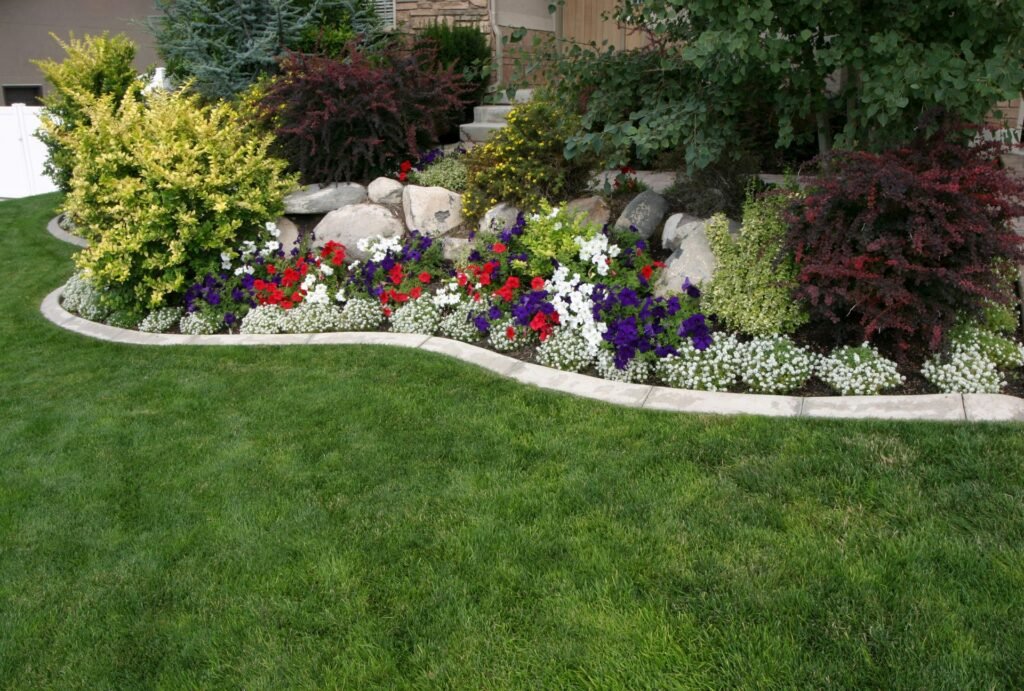
Boundary Landscaping Inspiration In New Zealand
Boundary landscaping is a key part of any property, both aesthetically and functionally. Around New Zealand, creative homeowners and landscapers have designed some amazing boundary landscaping projects that balance beauty, privacy and environmental considerations. This section showcases a range of inspiring case studies and examples of boundary landscaping in different situations.
Urban Backyard with Vertical Gardens
In New Zealand’s cities, space is at a premium. Urban backyards are getting smaller and smaller, so vertical gardens are the answer for boundary landscaping. These gardens, which use the vertical space along fences or walls, can turn a small enclosed area into a green haven.
For instance, an Auckland homeowner turned a small urban backyard into a green sanctuary by installing vertical garden panels along the fence line. These panels were filled with a mix of climbing plants like ivy and flowering vines, herbs and vegetables. The result? A private green space to escape the city and be sustainable. This used up the space and added visual interest by layering greenery at different heights.
By using a range of plant species, from flowers to herbs, this vertical garden was both beautiful and functional as a boundary. The dense foliage screened out the neighbour’s homes and reduced the noise from the street. Plus the eco-friendly plants that required minimal maintenance showed a sustainable approach to urban gardening.
Takeaway: Vertical gardens are the answer for small urban properties, you can have privacy, beauty and functionality in a small space.
Rural Property with Native Bush as a Natural Boundary
For those in rural areas, a more natural approach to boundary landscaping is often preferred, so the environment can blend in with the surrounding landscape. One example of this is a rural property on the outskirts of Wellington where the owners used native bush as a natural boundary to define their property lines.
Instead of traditional fencing they chose a mix of native New Zealand plants, ferns, kowhai trees and manuka shrubs. This not only kept the area looking natural but also supported local wildlife, native birds and insects. The natural boundary was beautiful and ecological, it required less maintenance than traditional fencing and created a habitat for native species.
Over time the native plants grew into a natural barrier that screened and windbreaks. The owners also put in walking paths through the bush, so the family could connect with the land in a more sustainable way.
Takeaway: Native bush landscaping is a sustainable and low maintenance solution for rural properties. It looks great and supports local ecosystems and wildlife.
Coastal Property with Hardy, Wind-Resistant Plants
Boundary landscaping on coastal properties has its own challenges with winds, salt and sandy soil. But with the right plants you can create beautiful and resilient boundaries that can withstand the weather.
On a Bay of Plenty coastal property the owners created a wind resistant boundary using hardy native plants like flax (harakeke), hebes and grasses. These plants were chosen for their salt tolerance and ability to withstand strong winds in coastal environments.
The tough low maintenance plants with their natural sweeping shapes fitted in perfectly with the dramatic coastal views. Not only did the plants act as windbreaks but they created a soft natural boundary that blended in with the surrounding landscape. The native coastal grasses provided a gentle but secure separation from the neighbour’s properties, privacy while still allowing views of the ocean.
The plants also helped with erosion, a common problem for coastal properties. By stabilising the soil with deep rooting plants the landscaping provided both aesthetic and practical benefits.
Takeaway: Coastal boundary landscaping requires plants that can withstand the elements. Hardy, salt tolerant species provide privacy, windbreaks and soil stability and fit in with the natural beauty of the coastline.
These examples show the many boundary landscaping options available to New Zealand homeowners, depending on their situation and environment. From urban backyards with vertical gardens to rural properties with native bush and coastal properties with wind resistant plants, each one shows the creativity and sustainability of good landscaping.
By choosing the right plants and layout boundary landscaping can improve the beauty, functionality and environmental fit of any property. These examples are just inspiration but also show you how to create boundaries that work and look good.
Urban or rural, limited space or lots of space, New Zealand has endless options for boundary landscaping that works with nature and gives you privacy, beauty and sustainability.
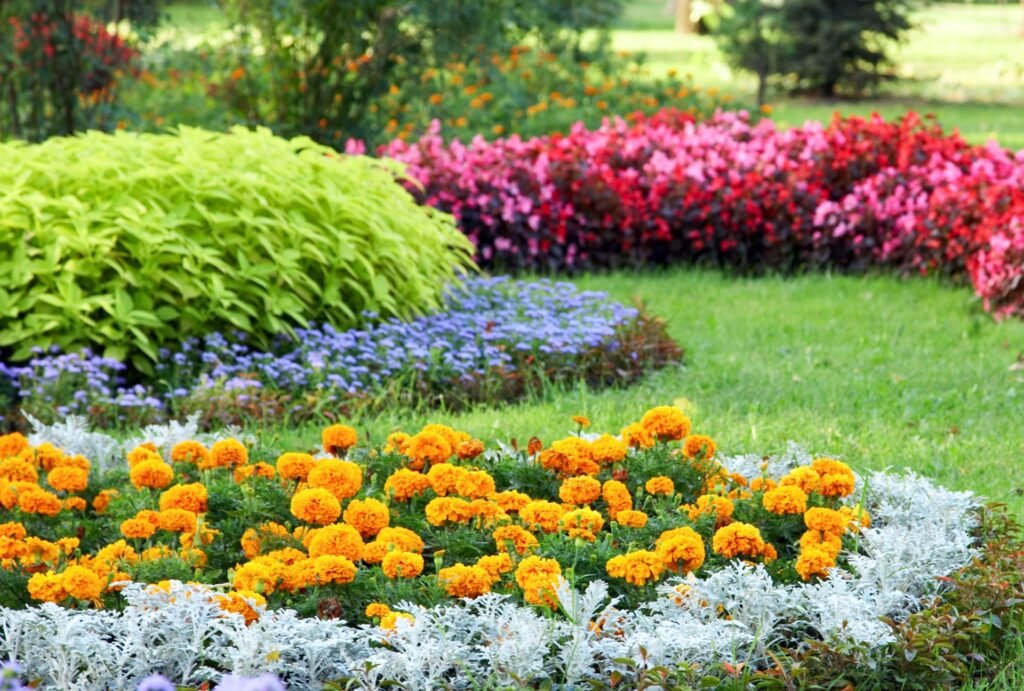
Resources To Get Started With Boundary Landscaping In New Zealand
So you want to get started with boundary landscaping in New Zealand? There are plenty of resources to help you along the way. Whether you want a low maintenance garden, a sturdy fence or the right native plants for your boundary, these New Zealand specific resources will be gold.
Council Guidelines
Local councils in New Zealand have guidelines for boundary landscaping. These can include rules around fence height, plant types and where boundaries are defined on properties. Check with your local council to make sure any landscaping work complies with zoning laws or other regulations. Many councils also have detailed documents on what’s allowed on shared boundaries especially in urban areas where properties can be quite close together.
- Resource: Check your local council website or ask them directly about their landscaping guidelines for fences, plants and other boundary features.
- Example: Auckland Council – Landscaping Guidelines has some great info on landscaping in urban areas.
Native Plant Nurseries
Native plants are great for boundary landscaping as they love our climate and require less maintenance. Native plant nurseries often stock native species for fencing, hedging or ornamental purposes. Choosing native plants also benefits the environment by supporting birds, bees and other pollinators.
- Notable Nurseries: The Native Nursery or NZ Native Plants have a wide range of native plants for boundary landscaping.
- Tip: When choosing plants consider their growth habits and what role they will play in privacy, security or aesthetics. Some species like Pittosporum, Kowhai and Cabbage Tree are popular for natural fences or windbreaks.
Landscaping Design Services and DIY Tutorials
Whether you’re looking for a small garden or a full boundary landscaping project, professional landscaping design services can offer custom advice. Many designers specialise in creating functional boundary landscapes that work with New Zealand’s varied climates.
- Professional Services: You can find landscape architects or designers who offer consultations and custom designs for your needs. Many also offer packages that include project planning, plant selection and installation.
- DIY Options: If you prefer to get your hands dirty, there are many online resources and tutorials to help you with the basics of boundary landscaping. From choosing plants to soil types and irrigation methods, these DIY guides are for beginners and experienced gardeners.
- Example: DIY Landscaping Tips has step by step guides on setting boundaries, choosing plants and even installing fences.
Recommended Books, Blogs and Forums
To learn more about boundary landscaping there are many educational books, blogs and online forums to help you stay up to date with trends, tools and techniques in New Zealand’s landscaping world.
- Books: Start with “The New Zealand Garden Landscape” by Bob Tennent which goes into the details of designing functional and beautiful gardens for our climate.
- Blogs: Follow The New Zealand Gardener for boundary landscaping, plant care and seasonal tips.
- Forums: Online forums like Garden Express or NZ Gardening Forum are a place to ask questions, share advice and learn from others experiences.
These are great for getting practical tips, finding inspiration and connecting with others who share your passion for gardening and landscaping.
By using these New Zealand specific resources you’ll be ready to start your boundary landscaping project. Whether you’re an experienced landscaper or a DIYer, there’s plenty of information to help you design, plant and maintain your perfect landscape. Start with local guidelines, source native plants, look at professional and DIY options and dive into books, blogs and forums to learn and improve your landscaping.
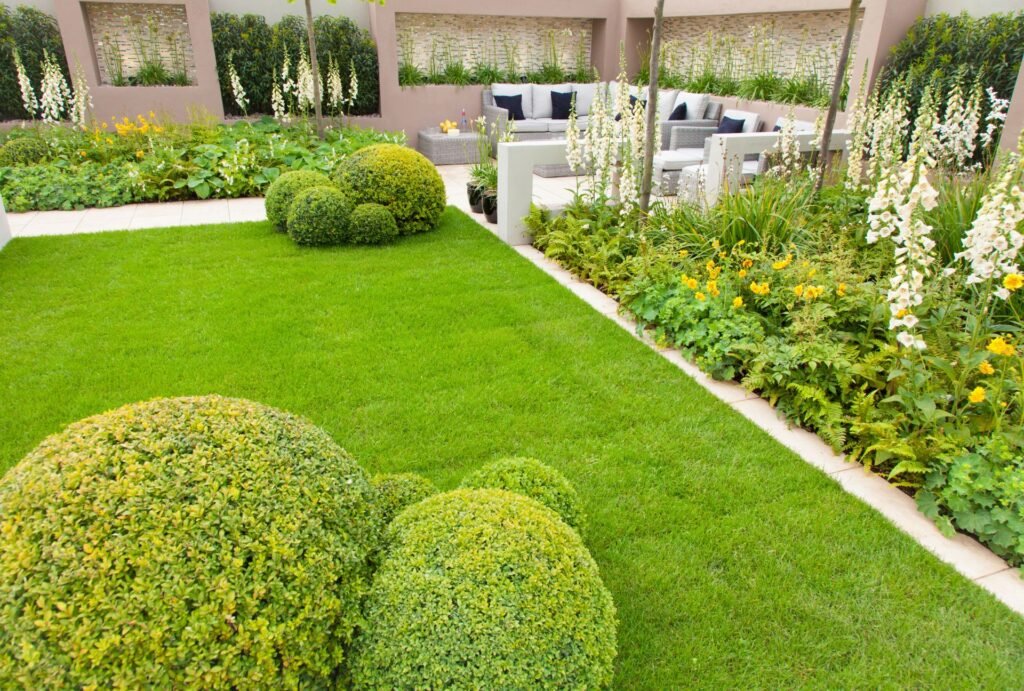
FAQs: About Overview Boundary Landscaping NZ
What is boundary landscaping?
Boundary landscaping refers to designing and maintaining the edges of a property using features like plants, fences, trees, or walls to enhance privacy, define property lines, and improve aesthetic appeal.
Why is boundary landscaping important in New Zealand?
Boundary landscaping is essential for privacy, security, and adding visual appeal to properties. In New Zealand, it also helps preserve native biodiversity by incorporating eco-friendly, native plant species into the design.
What are common boundary landscaping elements in New Zealand?
Popular elements include hedges (e.g., Pittosporum), fences, rock walls, trees, and shrubs. These features combine functionality with aesthetic value to create a cohesive outdoor space.
Are there any legal requirements for boundary landscaping in New Zealand?
Yes, local councils often have rules regarding fence and hedge heights, tree placement near boundaries, and neighbor consent for certain changes. Always check your regional council’s regulations.
What are the best native plants for boundary landscaping in NZ?
Native plants like Kōwhai, Harakeke (flax), Pōhutukawa, and Griselinia are excellent choices. They are low-maintenance, support biodiversity, and thrive in New Zealand’s climate.
How can I resolve disputes with neighbors about boundary landscaping?
Start by communicating openly and involving neighbors in the planning process. For legal disputes, consult your local council or a mediator to find a solution that works for both parties.
What are some low-maintenance options for boundary landscaping?
Options include using hardy native plants, drought-resistant species, or installing fences and rock walls that require minimal upkeep. Choosing plants suited to the local climate can also reduce maintenance.
Can boundary landscaping help with property value?
Yes, well-designed boundary landscaping enhances curb appeal, increases privacy, and creates functional outdoor spaces, all of which can positively impact property value.
What are the environmental benefits of boundary landscaping?
Incorporating native plants helps support local wildlife and ecosystems. Boundary landscaping can also reduce soil erosion, improve air quality, and contribute to sustainable water use.
Where can I find more resources about boundary landscaping in NZ?
You can consult your local council’s website for regulations, visit native plant nurseries for expert advice, or refer to landscaping books and blogs dedicated to New Zealand gardening and design.
Conclusion
Creating a well-designed boundary landscape in New Zealand is not only essential for enhancing your property’s aesthetics but also crucial for privacy, security, and sustainability. When planning your boundary garden, it’s important to consider legal regulations regarding height restrictions, property lines, and local council requirements to avoid conflicts. Choosing the right plants for your boundaries, such as native species that thrive in New Zealand’s climate, can create natural barriers while also supporting local wildlife. Incorporating design elements like hedges, fences, and natural screening can provide the privacy and visual appeal you desire. Whether you’re focusing on functionality or beauty, make sure to design with both practicality and environmental impact in mind. How will you transform your property boundaries into a harmonious, functional space that reflects your personal style and fits your needs?


